Businesses are savvy entities so when they sense a shift in customer preferences, most are going to seize on the opportunity. Or at least try.
That remains true in the area of eco-friendly products and services, and surveys show people, especially Millennials and Generation-Z, are willing to pay more for these products.
A survey by one environmental technology company found that almost two-thirds of people are willing to pay more for environmentally sustainable products.
It makes the field ripe for abuse.
The practice of misleading consumers and investors about a company’s environmental record is called greenwashing, and beyond being unethical, it can lead to serious consequences for any business that is exposed for such activity.
“Consumers today – especially Millennials and Generation Z – are willing to pay extra if companies can clearly articulate their green credentials, do it transparently, and do it authentically. Our book helps businesses understand how to do that and how not do that,” said Tony DeFazio, who has been practicing PR for nearly 30 years. His latest venture is SustainablePR in Glens Falls.
Knowing “how not to” do green marketing is as important as doing it correctly.
The guide, “7 Winning PR Tactics for Green Companies,” includes the cautionary tale of the billion-dollar sneaker company.
The company, Allbirds, was found in its initial-public-offering filing to have reported misleading information about its carbon footprint and animal welfare claims. It is now facing a potential class action lawsuit.
The guide is designed to help businesses navigate the complex world of environmental public relations and avoid the pitfalls found along the way. It is available as a free download from the firm’s website and articulates seven tactics for effective green marketing.
DeFazio hopes his guide shows businesses how to steer clear of flimsy environmental claims and instead follow the example of companies like Timberland. The outdoor shoe and clothing company has a dedicated page on its website detailing information such as how many plastic bottles they’ve recycled and how many trees they’ve planted.
Conkling Center Ageless Opportunities
Using verifiable facts, being specific with language, and consistently demonstrating transparency are among the best practices recommended in the guide. While such tactics are the foundation of any good PR program, they are particularly critical in the world of green marketing where the stakes are often higher, DeFazio said.
“Businesses have an outsized responsibility to their communities, stakeholders, and investors to communicate clearly and transparently. We’re trying to save the world here. Literally!” he said.
Read the original article posted on Foothills Business Journal here.





